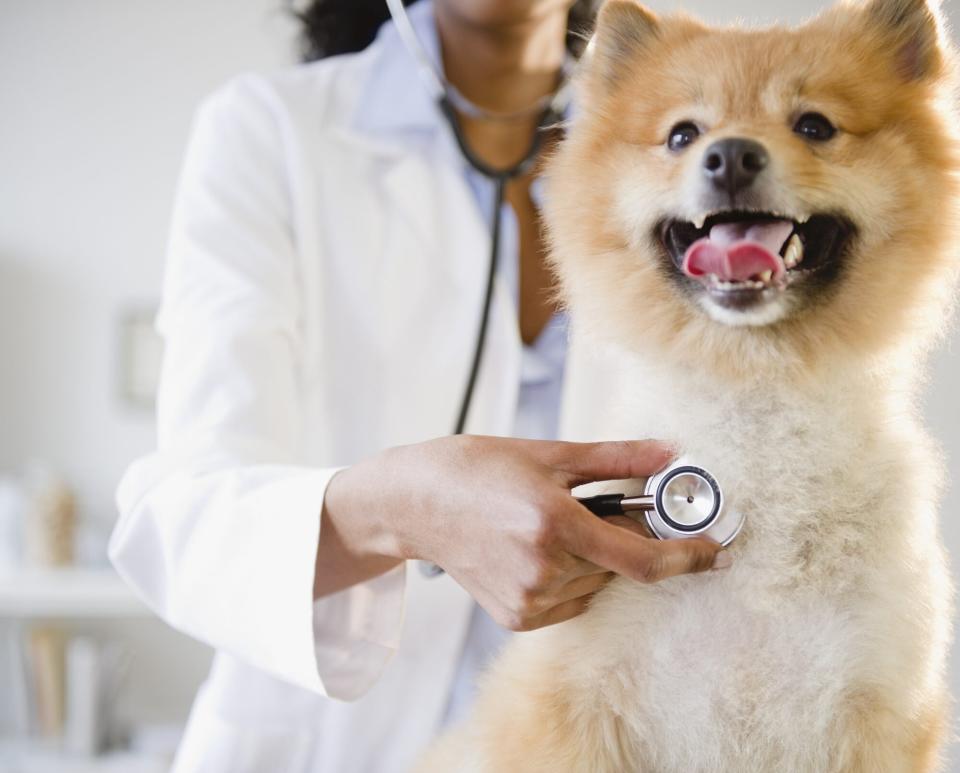All About Pet Insurance: What Does It Cover, and Should You Purchase a Plan?
Pet insurance provides medical coverage for your pet's health, and amid uncertainty during the COVID-19 pandemic, it could be more important to purchase a policy than ever before. "Pets have become akin to family members," says Beth Wymer, animal health and insurance expert at Pumpkin Pet. "Parents would never leave a child uninsured, so pets shouldn't lack insurance either."
Both routine and emergency medical care for pets can cost hundreds to thousands of dollars out of pocket. And these unexpected healthcare costs could mean having to make tough decisions. "One in three pets require emergency care, which costs an average approximately $1,000 per incident," says Wymer. "Over the course of a dog's lifetime the numbers add up. In fact, most owners can easily expect to spend over $16,000 in medical costs over a pet's lifetime." Our animals are certainly worth every penny, but this can put a strain on both our finances and our stress.
This is where pet insurance comes in—here's what you need to know about pet health insurance and how it covers medical care costs as well as helps to ease the burden of debt for pet parents.
Related: Does Your Dog Have a Fever? Here's How to Tell

JGI / Jamie Grill / Getty Images
Types of Pet Insurance
Pet insurance plans have different coverage amounts that are as varied as the companies that offer them. You can choose from different levels of care and coverage, some with higher coverage amounts or higher deductibles. You'll have to shop around to determine which plan fits your needs. "One of the biggest mistakes pet owners make is choosing a plan based exclusively on price," Wymer says. "Many of the 'cheaper' options exclude coverage for hereditary conditions, dental disease, preventable illnesses, and exam fees—the costs of which can significantly add up over time." Most plans will have an annual deductible that you'll have to meet before insurance coverage kicks in. However, some companies will offer what is called a "per condition" deductible, as Wymer explains. That means that you'll have to always pay a portion of the bill that meets the deductible for that particular condition before insurance pays anything.
Accident and illness insurance plans do not cover preventative and wellness. So, you should consider looking into companies that offer wellness coverage as add-ons. "Pumpkin is one of the few that covers 100 percent of the costs associated with the annual wellness exam, vaccines, and a fecal exam," says Wymer. "Other wellness plans may pay a certain dollar amount or reimburse for a percentage of the costs."
Levels of Coverage
Choosing the right level of coverage for your pet is important, too. You will want to look for a plan that covers at least an 80 percent reimbursement of a wide variety of medical treatments, conditions, or illnesses. "Oftentimes, owners who have a healthy, young pet think they don't need coverage for diseases that usually occur in older animals, but the reality is, once a plan is selected, it's only possible to reduce coverage in response to make medical needs, not expand as an animal ages," explains Wymer. "For example, if an owner selects a base plan for $5,000 because their pet has no medical issues, they would not be able to increase the annual limit to $10,000 at their pet grows older and requires more medical care."
So, what does that mean? You will need to determine a rough estimate of what medical care your pet could need in the future. For some animals, you can have an idea based on the common health problems of their particular breed. Other factors to consider are your pet's ancestry (if you know it) and where you live (in the city versus in the country). All of these factors could affect your pet's future health. "It's important to research which animal breeds are most susceptible to hereditary conditions and then choose a plan that specifically covers those, because some insurers refuse to cover hereditary and breed ailments altogether," adds Wymer. As for what is covered, this will also vary by company and by plan. There are also different definitions of what counts as a "pre-existing condition," such as, if the animal had treatment for it in the last three months, it's pre-existing but not if it was once over 12 months ago. This may be referred to as a "curable conditions clause" that allows treatment for previous conditions if they've been previously "cured" and symptom free for a set number of days (usually 90 to 180 days).
Most plans consider treatment for a condition that occurred at any time before coverage as "pre-existing," and they won't cover any costs associated with it. You will need to look at the fine print, and don't be afraid to ask questions about what's covered and what's not covered. Get a detailed list before you sign on with a plan.
Reimbursements and Claims
In the end, it's worth remembering that pet health insurance does not work the same way as our medical insurance. "There's no concept of in-network or out-of-network care," Wymer explains. "Most pet insurance companies allow owners to go to any licensed vet or emergency clinic in the United States." Some companies may also provide money upfront to cover veterinarian costs. However, more plans will reimburse you for the costs that you incur. You would submit a claim with the receipt you had gotten from the veterinarian's office, and the pet insurance company reimburses you for their portion of the amount according to your insurance plan and coverage amounts.

